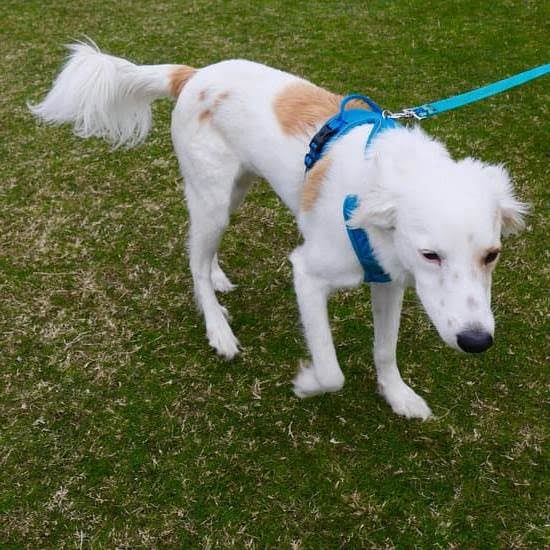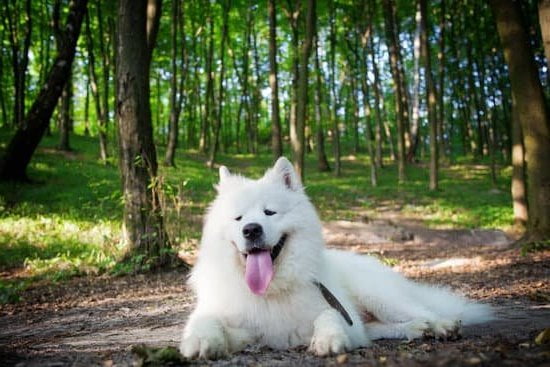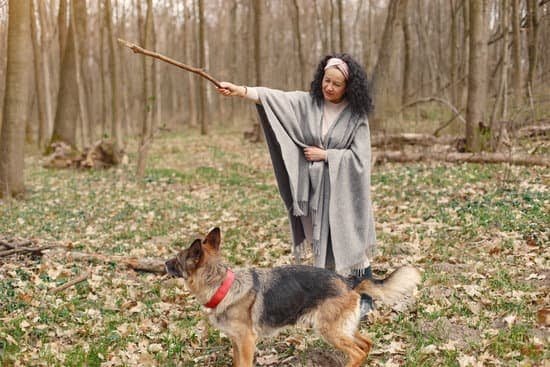Introduction
Separation anxiety is a condition experienced by some dogs in which they become very distressed and exhibit destructive behaviors when left alone. Dogs that suffer from this condition may bark, whine, howl, chew on furniture or shoes, try to escape the house, or even urinate and defecate indoors. It can be a very difficult experience for both them and their owners.
The first step to effectively training your dog is to understand why separation anxiety occurs. Most commonly it is caused by a disruption of routine such as a new house or family member entering the home. Other factors such as not enough exercise or attention can also lead to anxiety in dogs as well as changes in their environment like construction areas or moving from one home to another.
Once you have identified what is causing your pup’s separation anxiety it is important to use positive reinforcement techniques to help manage the stress and create an association between positive experiences when being left alone. Start by establishing a consistent routine such as setting aside time every day for play with your pup prior to leaving the home. Create a safe space such as a crate that allows your pet to feel secure when you are away, include special toys and treats for them to enjoy during these moments. Additionally reward your pet’s good behavior with praise or treats when they stay calm during times of absence which will help reinforce their good behavior moving forward. Lastly never make leaving an emotional event! Saying goodbye should always be done with reassurance rather than emotion so that they begin associating leaving with positive experiences as opposed to fear and sadness.
Causes of Separation Anxiety
Separation anxiety in dogs is a behaviour disorder that can have many underlying causes. In some cases, the cause could be genetic and due to the breed of the dog. Other things that can induce separation anxiety in a dog include changes in its environment or routine and being overly attached to its owner. Poor socialisation, inadequate exercise and too much solitude can also play a role. It’s important for owners to be aware of things that trigger their dogs separation anxieties and learn how best to manage it.
Common signs of separation anxiety in dogs include excessive barking, whining or howling, urinating or defecating inside the house when left alone, excessive salivation and fleeing behaviour. The dog may even attempt to escape from the areas they are confined to while their owner is away such as a barking inside a crate or running off when loose outside the house. If a pet shows these behaviours it’s essential that owners take them seriously and look into possible treatment options for their companions.
Management of separation anxiety usually begins with changes to the environment, such as providing designated resting places for the pet away from high traffic areas as well as discouraging interaction with owners prior to leaving and upon arriving home from work or school (such as ignoring calls from them). Exercise and cognitive games designed for specific breeds should also be utilized daily so your pet will have plenty of activities to engage in while you are away from home. Systematic desensitization treatments paired with positive reinforcement conditioning should then be incorporated into your pet’s routine when going through periods of long-term absences anticipating those problem behaviours arising again.
Common Symptoms of Separation Anxiety
Separation anxiety is a common problem with dogs, which is characterized by distress, excessive barking and other disruptive behaviors that occur when they are separated from people they are attached to. If your dog has separation anxiety, the most important thing you can do is to remain calm and consistent with your response.
Common symptoms of dog separation anxiety include the following: barking or howling when left alone, destructive behavior such as chewing or digging on objects or furniture, urinating or defecating indoors (even if they have been house trained), excessive salivation, pacing or following people around the home continually, attempting to escape confinement (for example jumping out of open windows or pounding against doors) and depression. Dogs may also display these behaviors just before their owners leave as an anticipatory response. It’s important to note that these behaviors may be triggered by a variety of things – not just when someone leaves the house. Things such as being left alone for long periods of time without any activity can cause similar reactions in dogs with severe separation anxiety.
When it comes to treating your dog’s separation anxiety disorder there are a variety of techniques available such as counter-conditioning and desensitization. Counter-conditioning involves teaching the dog new behavior associations based on positive reinforcement when left alone (such as giving them treats). Desensitization involves gradually exposing your dog to increasingly longer periods away from you in order to reduce their distress when left alone. When it comes to treating separation anxiety, nothing works better than time and consistency on your part.
Preparing to Train Your Dog
When it comes to addressing the issue of separation anxiety in dogs, it is important to remember that it can take some time and patience to help your dog overcome their fear of being alone. Before you get started on the training process, there are a few crucial steps to take in order to create a positive experience for your pup:
1. Gather Supplies – To start, you’ll need lots of treats and a few toys or games that your dog finds stimulating. You’ll also need an area or room for them to stay in for practice, like their crate or a fetch area.
2. Set Up a Schedule – Having a routine will help your pooch understand when they are just practicing being away from you versus when you’re actually leaving the house. Start with short stretches and gradually increase the amount of time that passes before they see you again.
3. Establish Anchor Cues – Talk to your pet in calming tones prior to leaving, praising them when they’re calm and not displaying signs of separation anxiety. This will serve as an anchor cue so they know it’s ok be left alone while you’re away.
4. Stay Positive – When returning home, reward your dog immediately with treats if they stayed calm during the time apart and look forward to future times spent together down the line!
Positive Training Techniques
Positive training techniques are effective and reliable methods that owners can use to help their anxious dog deal with the stress of being alone. This includes using rewards to encourage your dog’s behavior when they stay in an area on their own while offering verbal praise and treats. Training with positive reinforcement enables dogs to learn to tolerate separation from their owners by associating being apart with positive experiences. Owners can also use counterconditioning, which is a process that aims to change the way a dog feels about being separated from his/her owner by introducing new activities or environments before leaving them alone for periods of time. This could involve providing positive associations with items like food puzzles, toys, and calming music. Additionally, restraining techniques and gentle desensitization may be used to help the pet become comfortable with the presence of unfamiliar people or objects in their home and create a more relaxed environment when left alone.
An Overview of Step-by-Step Training
Training a dog with separation anxiety is not an easy task, but with the right approach it can be done. The first step is to identify the source of their anxiety and design a plan tailored to your dog’s individual needs. This might include gradually increasing “alone time” periods and easing the physical signs of distress. It’s also important to provide positive reinforcement when your pup does something well and be consistent with this training. The next step is to teach your pooch basic commands such as “stay,” “come,” “leave it,” and even “relax.” With proper guidance from you, your pup will start to understand when it is necessary for them to stay calm in situations that make them uncomfortable. The last step is getting help from professional trainers if needed; they have the knowledge and experience to best assess what kind of treatment plan works best for your pup. Finally, make sure you keep up with regular training sessions so that your pup continues to be successful in calming down when they experience stressful situations. With enough patience and care, any dog can learn how to cope with their anxiety!
The Importance of a Positive Environment for Training
Having a positive environment for training is essential in helping dogs with separation anxiety. Creating an inviting and comforting atmosphere can help your dog cope with their individual issues and reduces the intensity of their needs or panic attacks. This type of atmosphere also helps to create trust between the dog and their owner, allowing them to feel safe and secure while they are separated from you. When selecting a space to complete training exercises with your pup, it should be quiet, calm, and free from any distractions that could cause further disruption. It’s best to choose an area where there won’t be other animals present as this might only exacerbate their fear of being alone. Additionally, keep all noise levels at a minimum as too many stressors going on around may only increase their anxiety. Be sure to provide plenty of positive reinforcement when your pup accurately completes tasks give them praise or treats whenever possible during the process; this will help to build up confidence in your pet as well as encourage good behavior going forward!
Management Techniques for Sustaining Training Results
Once initial progress has been made in training a dog with separation anxiety, it is essential to create techniques that maintain success. A successful formula for sustaining trained results includes practice, consistency, and positive reinforcement.
Practice: It is important to repeat the learned behaviors over time to prevent relapse and keep the dog’s anxiety at bay. Practice should be modulated with the goal of gradually increasing the number of minutes of separation from home. This will allow the dog to build trust in their owner while also reducing any stress or uneasiness they may be feeling at being alone.
Consistency: Because separation anxiety caused by human reaction and interaction can become unpredictable, establishing a consistent set of commands that are both repeated and rewarded is key. Routines form trust between pets and owners as they provide instant gratification when done properly; this also helps manage separation anxiety by providing a structured environment that allows dogs to better cope with their anxieties.
Positive Reinforcement: Positive reinforcement of desired behaviors is one of the most effective ways to reward your pet and help sustain training results over time. Rewarding your pet for completing an instructional command goes beyond external rewards such as treats; instead, verbal recognition like “good boy” or “excellent work” reveals how proud you are of your pup which encourages them further and keeps them motivated on the path towards settling into their new routine without exhibiting symptoms of anxiety.
Troubleshooting Training Challenges
When dealing with separation anxiety training, it is important to be aware of the common challenges that may arise. It is normal for any new behavior to have trouble taking shape so don’t be discouraged if your pup struggles at first! Be sure to think about how you can modify the environment and routines to make success more likely by taking into consideration these potential roadblocks:
1. Fear of Being Alone: Your pup may be apprehensive about being in a room by himself or in their bed since they are used to spending all their time around you. Counteract this fear by gradually introducing them to being alone starting with short periods in different rooms of the house. To help build confidence, leave favorite toys and treats available for when you step out of the room.
2. Reacting Nervously Around Triggers: Pay attention to what activities trigger anxious behaviors such as bringing out the suitcase or spinning car keys and give your puppy plenty of warning that those tasks are coming. You can counteract this tendency by heavily rewarding them when they experience certain triggers without becoming anxious or fearful.
3. Kinetic Hyperactivity: For some dogs, separation anxiety leads directly to energy overflowing and an inability to calm themselves down on their own; leading them to respond with barking, pacing or general chaos during alone time sessions. To combat this behavior you will need increase the duration that they stay in their bed or crate until they reach a level of self-control which keeps them calm even after extended periods apart from you.
By understanding these common challenges and having strategies ready for each one, it will help your pup learn how to cope with feeling uncomfortable during times where separation between pet and pet parent is necessary – ultimately improving their quality of life
How to Monitor and Manage Separation Anxiety in Your Dog
Separation anxiety in dogs can be a huge issue, and it requires your commitment to take the steps necessary to help your canine companion become more comfortable when separated from their human family members. The first step is to monitor your dog’s behavior when they are left alone by briefly leaving them while staying nearby. This monitoring should focus on things such as barking, pacing, destructive behaviors, or signs of stress. By doing this, you will be able to better understand what makes them anxious and uncomfortable.
The next step is to manage any behavior that does occur by providing distraction in the form of things such as toys or puzzles. This will allow your dog something else to focus on rather than their separation anxiety. Additionally, if there are certain areas in the home where destructive behavior tends to occur more often than not, close off those areas so that access is limited.
Finally, training techniques such as desensitization, counter conditioning, and classical conditioning can all be utilized to help with separation anxiety in dogs. Desensitization involves gradually introducing and exposing a dog to a situation that evokes fear without reinforcing that fear during each exposure – until the pup eventually loses their fear response. Counter conditioning is a technique used to teach a dog an alternate or desired behavior by associating an unconditioned stimulus- which always elicits a specific response- with a different response triggered by the same stimulus. And lastly Classical Conditioning involves using positive reinforcement associated with triggers or situations that would otherwise cause fear or discomfort such as leaving the house; offering treats while performing the activities repeatedly will help create positive associations with these situations instead of negative ones due to anticipation of being alone and away from their people for extended periods of time.
Conclusion
Training your dog to respond positively to being alone is essential in order to help them overcome separation anxiety. Engaging in activities that your pup enjoys, such as playing fetch or outdoor physical activities helps these dogs to expend excess energy and become calmer. Rewarding your dog for positive behavior can also strengthen their positive associations with being alone and create a sense of safety. Seeking the help of an experienced professional can be beneficial when working through the training process, providing guidance and ensuring steps are taken correctly.
Above all, it is important to be consistent when it comes to helping your dog overcome separation anxiety through training. Training should be conducted at a regular time each day, as well as repeated across many days if needed. Establishing routines and using soothing words or treats during the training process can also be helpful. Furthermore, teaching new commands through reward-based methods allows dogs to make connections between their behavior and the rewards they receive each time they make a good decision. Additionally, it is important not to increase separation times too quickly as this can cause increased anxiety; rather, introduce them slowly over time for more successful results. Finally, creating an environment that encourages calmness is paramount in overcoming anxieties associated with separation; reducing noise levels and providing enrichment items that allow for cognitive stimulation are two such ways of doing this.

Welcome to the blog! I am a professional dog trainer and have been working with dogs for many years. In this blog, I will be discussing various topics related to dog training, including tips, tricks, and advice. I hope you find this information helpful and informative. Thanks for reading!





